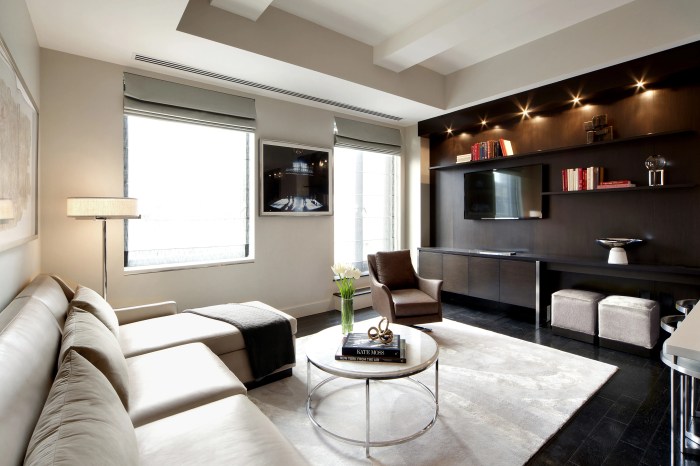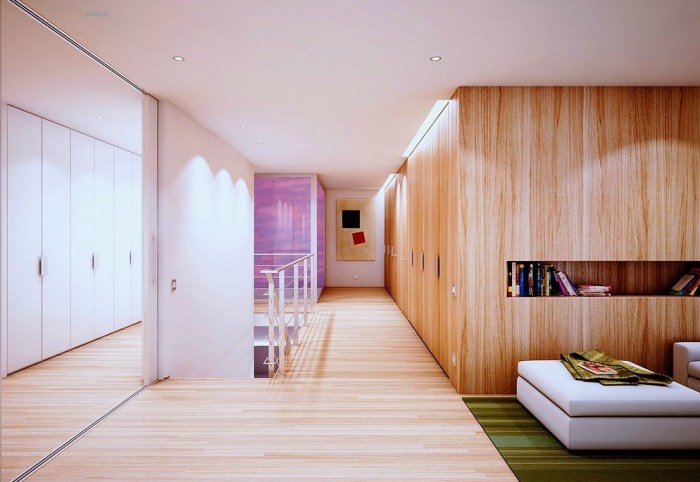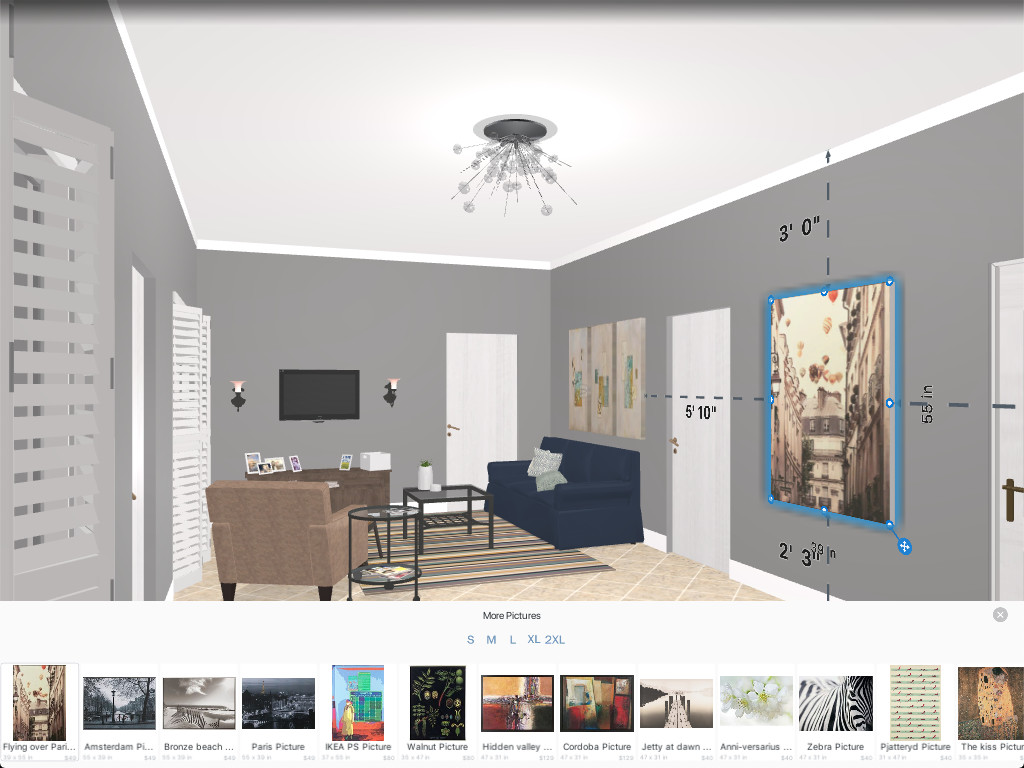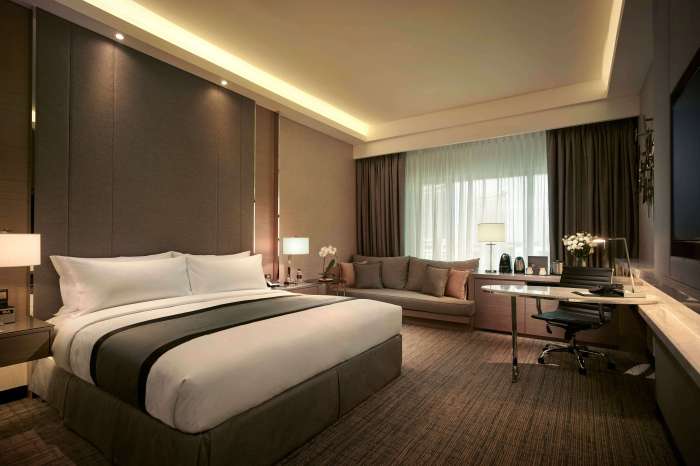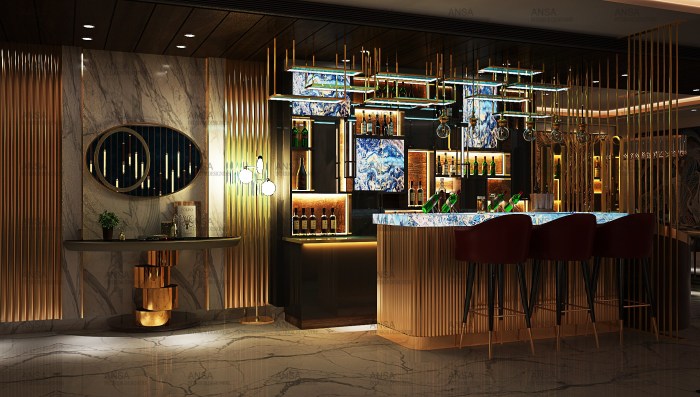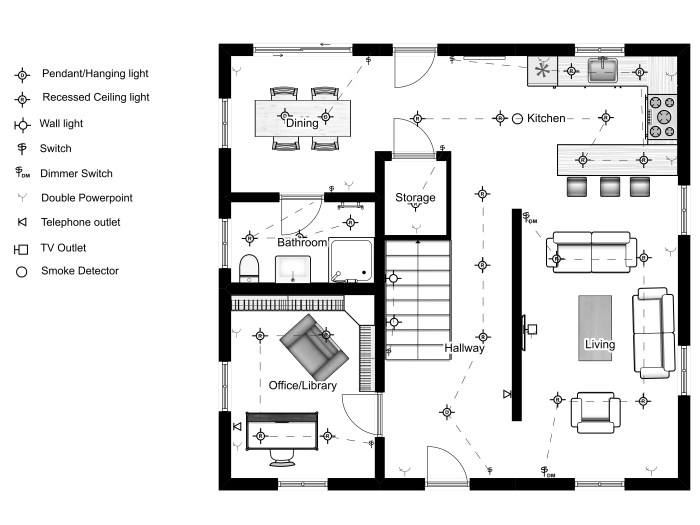Step into the world of contemporary interior design where innovation meets style. Discover the evolution of this design trend and how it shapes modern living spaces.
Delve into the key elements that define contemporary interior design and how they come together to create a unique aesthetic.
Overview of Contemporary Interior Design
Contemporary interior design is a style that is constantly evolving and reflects the current trends and preferences of the present time. It is characterized by clean lines, minimalism, and a focus on simplicity and functionality.
Key Characteristics of Contemporary Interior Design
- Sleek and clean lines: Contemporary interiors often feature straight lines and smooth surfaces, creating a sense of simplicity and elegance.
- Neutral color palette: Colors in contemporary design are typically neutral, with bold accents used sparingly to add interest.
- Open spaces: Contemporary interiors prioritize open floor plans and uncluttered spaces, creating a sense of airiness and spaciousness.
- Mix of materials: Contemporary design incorporates a variety of materials such as glass, metal, and wood to add texture and visual interest.
- Minimalist furnishings: Furniture in contemporary interiors is often sleek and simple, with a focus on comfort and functionality.
Evolution of Contemporary Interior Design
Contemporary interior design has evolved over time to reflect changes in technology, lifestyle, and design preferences. Initially influenced by the modernist movement of the early 20th century, contemporary design has since incorporated elements from various styles and eras to create a unique and dynamic aesthetic that continues to adapt to the ever-changing world of design.
Color Palette and Materials
In contemporary interior design, the color palette and materials play a crucial role in shaping the overall aesthetic and atmosphere of a space.
Popular Color Palettes
Contemporary interiors often feature a neutral color palette with pops of bold, vibrant colors for contrast. Some popular color schemes include:
- Monochromatic: Utilizing varying shades of a single color for a harmonious look.
- Neutral with a pop of color: Using a neutral base such as white, beige, or gray, with a bold accent color like teal, mustard, or navy.
- Earthy tones: Incorporating colors inspired by nature such as greens, browns, and blues for a calming effect.
Role of Materials
The choice of materials in contemporary interior design can greatly impact the look and feel of a space. Here are some common materials and their roles:
- Glass: Glass is often used to create a sense of openness and light in contemporary spaces. It can be incorporated through windows, doors, and furniture pieces.
- Metal: Metals like steel, chrome, and brass are frequently used in contemporary interiors for a sleek and modern look. They can be seen in fixtures, accents, and furniture legs.
- Wood: Wood adds warmth and texture to contemporary spaces. It is commonly used for flooring, furniture, and accent pieces to bring a natural element into the design.
Impact of Colors and Materials
The combination of colors and materials can drastically alter the mood and style of a contemporary space. For example, pairing a monochromatic color scheme with metal accents can create a minimalist and industrial look, while opting for earthy tones with wooden elements can evoke a more organic and cozy feel.
Furniture and Layout
When it comes to contemporary interior design, furniture plays a crucial role in setting the tone and style of a space. The right furniture pieces can enhance the overall look and feel of a room, creating a modern and sleek atmosphere.
Additionally, the layout and placement of furniture are equally important in achieving a cohesive and well-designed contemporary space.
Furniture Styles in Contemporary Design
In contemporary interior design, furniture styles often feature clean lines, minimalistic designs, and a focus on functionality. Some common furniture styles found in contemporary spaces include:
- Mid-century modern: Characterized by sleek lines, organic shapes, and a mix of materials like wood, metal, and glass.
- Scandinavian: Known for its simplicity, functionality, and light color palette, with an emphasis on natural materials.
- Industrial: Featuring raw, unfinished materials like metal and exposed brick, with a utilitarian aesthetic.
Iconic Furniture Pieces in Contemporary Design
There are several iconic furniture pieces that are synonymous with contemporary design and have stood the test of time. These pieces include:
- Eames Lounge Chair: A classic mid-century modern piece known for its combination of leather and molded plywood.
- Noguchi Coffee Table: Designed by Isamu Noguchi, this sculptural table adds an artistic touch to contemporary spaces.
- Barcelona Chair: Created by Ludwig Mies van der Rohe, this elegant and minimalist chair is a staple in contemporary design.
Layout and Furniture Placement
The layout and placement of furniture play a crucial role in creating a contemporary space that is both functional and visually appealing. Key considerations include:
- Open Floor Plans: Embrace open spaces and avoid clutter to maintain a sense of airiness and flow.
- Focal Points: Arrange furniture around a focal point, such as a fireplace or piece of art, to create visual interest.
- Zoning: Define different zones within a room for specific functions, such as a seating area, dining area, or workspace.
Lighting and Accessories
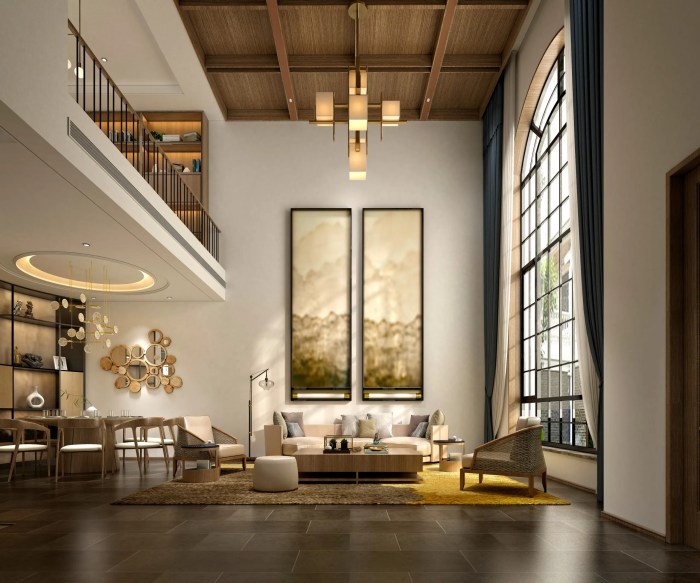
In contemporary interior design, lighting plays a crucial role in creating the desired atmosphere and highlighting key elements of a space. Additionally, accessories and decor items can further enhance the overall look and feel of a room, adding personality and style.
Lighting Fixtures
Popular lighting fixtures in contemporary interior design include:
- Track lighting: Provides flexibility in directing light to specific areas, creating a modern and sleek look.
- Pendant lights: Adds a touch of elegance and can serve as a statement piece in a room.
- Recessed lighting: Offers a clean and minimalist look, ideal for highlighting artwork or architectural features.
- Chandeliers: Adds a touch of luxury and sophistication to a contemporary space.
Impact on Ambiance
The choice of lighting fixtures can significantly impact the ambiance of a contemporary space. For example, warm lighting can create a cozy and inviting atmosphere, while cool lighting can give a more modern and refreshing feel. Properly placed lighting can also help accentuate the design elements in a room.
Accessories and Decor
Accessories and decor items such as statement art pieces, decorative pillows, rugs, and plants can enhance the contemporary look of a room. These elements add texture, color, and personality to the space, creating a cohesive and visually appealing environment.
Epilogue
As we conclude our exploration of contemporary interior design, it's clear that this style offers endless possibilities for creating sleek and sophisticated spaces. Dive into this design world and unleash your creativity!
Quick FAQs
What makes contemporary interior design different from other styles?
Contemporary design emphasizes clean lines, minimalism, and a focus on function over form.
How can I incorporate color in a contemporary interior design scheme?
Opt for neutral tones with pops of bold color to create a modern and vibrant space.
What are some iconic furniture pieces in contemporary design?
Pieces like the Eames Lounge Chair and Barcelona Chair are timeless classics in contemporary interiors.

